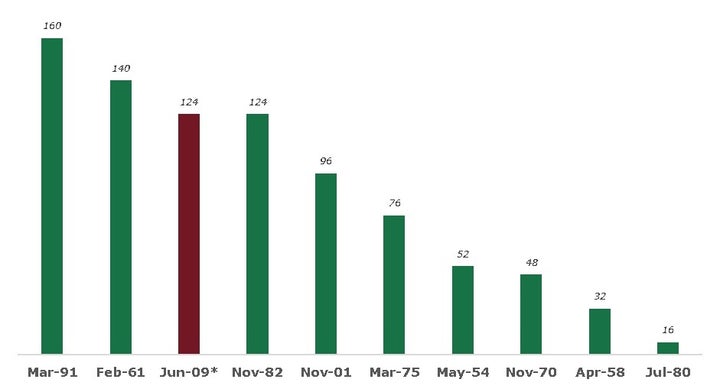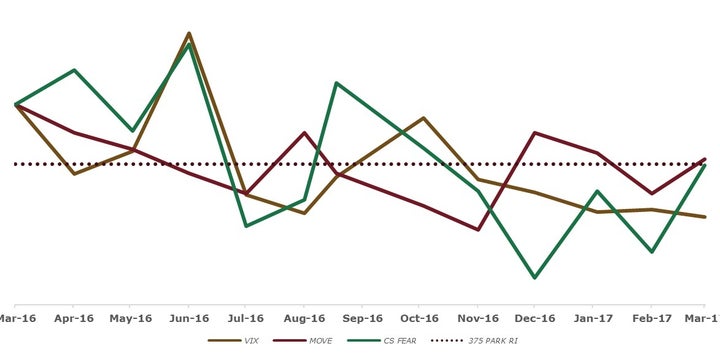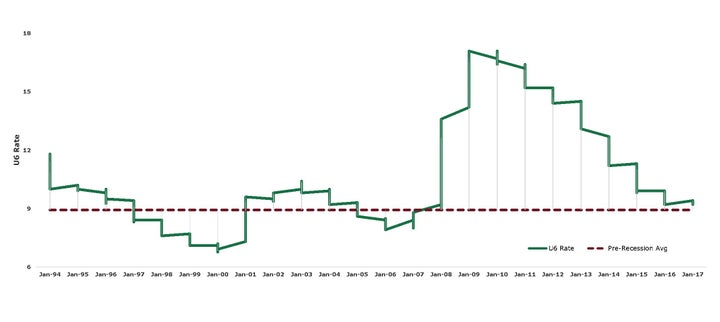
America
While it is too early to assess the full impact of the 2016 election; one thing is for certain, electing a bull to the run the china shop does raise several questions:
- Will promises to create high-paying jobs materialize?
- What will be the impact of tax reform?
- Will regulatory reform level the playing field?
- How will healthcare reform impact employers?
- How will the new Administration’s policies impact trade?
These questions don’t even address the potential fallout from looming international crises, increased political polarization, or scandal.
As 2017 is a change year, the emphasis on government policy is to be expected. However, this does not mitigate the fact that the emphasis on policy is a sad commentary on the role government plays in a supposed ‘free market’.
In fact, this concern has been echoed by clients who have mentioned that change is not the issue. Rather the question is what form will the changes take, and importantly, how quickly it will be implemented.
Another factor leading to uncertainty is the age of the current economic expansion. At 124 months, and counting, it is on the verge of becoming the second longest since World War II. While Federal Reserve Chair Janet Yellen is on the record as stating ‘its’s a myth that expansions die of old age,’[1] the sheer length of the recovery raises the specter that some sort of correction might be on the horizon.

How Long Will the Party Last?
Length of Post-WWII Economic Recoveries, in Months[2]
Another issue of concern is the recent run-up in asset prices. In fact, Morningstar’s Elizabeth Collins alluded to the fact on a recent conference call, noting that ‘we do see a lot of companies and industries that are overvalued. In general, we think that the market is pricing in a lot of optimism and not taking into account a lot of things that could go wrong in the future.’[3]
Even measures of risk, such as the VIX (i.e. CBOE Volatility Index), seems to be undervaluing the potential for a correction. One potential explanation is that the VIX is a measurement of ‘realized volatility’[4] and not implied volatility.
In fact, 375 Park indexed four different risk measurements – the VIX, the Merrill Option Volatility Estimate (MOVE), the Credit Suisse FEAR Index, and our in-house Risk Index – and the results not only imply that the VIX is undervaluing potential risk, but that the potential for a correction has increased significantly over the last month.

Trouble Brewing?
Analysis of Risk Indices as of March 2017[5]
While our in-house risk index (which is part of the Growth Opportunity Index™) does indicate, the current environment is still conducive for growth, trouble could be brewing.
Inflation is also a concern. While the most recent FOMC announcement noted the expectation that inflation would ‘stabilize around 2 percent’[6], others are concerned that inflation could accelerate to 2.5 percent by the end of the year[7]. At the same time, the Thompson Reuters consensus US 2017 GDP forecast is in the range of 2.32 percent. If this were to play out, then the result would be net-negative for the economy.
Jobs
The President made job creation a centerpiece of his campaign. However, this may be a difficult promise to keep.
Unemployment 6 (U6), which is a measure of broader employment, points to the possibility that the economy is nearing full employment as the U6 Rate is only three-tenths of one percent higher than the pre-recession average. However, there is still room for improvement as labor force participation continues to remain below historic averages.

Total unemployed
(plus all marginally attached workers plus total employed part time for economic reasons - U6)
Little Room for Improvement[8]
Another potential challenge is productivity growth, which remains near post-recession lows. While some have argued this was due to policies of the previous Administration, another view is that the full impact of emerging technologies (IoT, 5G, Blockchain, AI, and 3D Printing, et. al.) have yet to be realized.
In fact, the biggest threat to job growth may well be technology. Not just in the jobs technology replaces, but also how the cost of acquiring certain technologies has hamstrung the ability of mid-market companies to accelerate growth[9] - thus creating more jobs.
While resource sharing and CAPEX-to-OPEX conversion can lowering barriers to entry; neither has reached a point of critical mass. As such, it is likely that small-to-midsized manufacturers will remain under pressure for the foreseeable future. This creates a problem for job creation as the inability of employers to gain access to the capital needed to ‘hire’ technology will delay their ability to grow.
In addition, unskilled workers face a dire future. In December, the Council of Economic Advisers (CEA) reported that ‘83 percent of jobs making less than $20 per hour would come under pressure from automation.’[10] This is compared to 31 percent of positions earning between $20 and $40 per hour and roughly 4 percent of those positions earning more than $40 per hour. As such, we are left to conclude that promises to create high-paying jobs en masse will continue to remain elusive for the foreseeable future.
Tax Reform
There is little doubt the tax code in the U.S. is archaic, overly complex, and out of touch with a highly-automated workforce as it tends to punish hourly workers and small businesses. This needs to change and promises to review and reform the tax code are welcome.
However, little or no information on plans to overhaul the tax code has been released and this creates a high level of uncertainty. A big reason for this is the consensus amongst Republican leadership in Congress that the repeal and replacement of the Affordable Care Act (ACA or Obamacare) needs to come before substantive tax reform. While there is some logic to this argument, the approach puts ideology above the pragmatic needs of the country.
In addition, proposed tax cuts will do little to help those outside the top decile (10 percent) of earners. This is essentially a redux of ‘Trickle Down Economics’. However, the economy has fundamentally changed since the 1980’s and the idea that tax cuts for the top decile would automatically benefit everyone else is potentially misguided.
For example, the global economy is more integrated than ever before and there are no guarantee tax cuts in the U.S. will lead to increased investment in the U.S. While the use of legal mechanisms to compel such investment would mark a dramatic departure from a belief in a free-market.
As such, delaying tax reform until after healthcare reform almost certainly ensures that current tax rates will remain in place until businesses submit their fiscal 2018 filings.
Regulatory Reform
On its surface, the order to eliminate two regulations for every new regulation is a welcome step. However, the devil is in the details as little thought has been given to how the process would work. As such, it is not unrealistic to expect significant unintended consequences may results from blindly repealing regulations.
In addition, many of the regulations which hurt businesses large and small have been put in place by state and local governments. This means regulatory reform at the Federal level will have nothing more than a psychological impact on business.
From our perspective, a better approach would be to undertake a regulatory guillotine process at each level of government. Such an approach would emphasize the rationalization of regulations, ensuring protections for consumers, allowing certainty within markets, and even more so – providing a springboard for innovation.
Trading partners such as Mexico and Korea have undertaken such a process and the results have been impressive. In Mexico, the nine-month process eliminated 54 percent of regulations and simplified an additional 27 percent of regulations. In Korea, the process helped to create more than 1 million new private sector jobs (the equivalent of 4.5 million in the U.S.) and added billions in GPD.[11] Unfortunately, it appears policymakers are either unaware or unwilling to undertake such a process.
However, there is another, often overlooked, way to drive growth – innovation. As such, business leaders need to see regulations as motivation to innovate and gain advantage in the market. By embracing such an approach, business can turn a perceived negative (regulations) and turn it into a positive (growth).
Healthcare
The real problem is how can the U.S. compete globally when spending on healthcare as a percent of GDP is significantly higher than its next 11 trade partners? Making matters worse, Democrats and Republicans alike lack a plan to address this issue. As such, the broken healthcare system acts as a tax which disproportionately affects middle market companies and the self-employed.
The chart below illustrates the point. Based on data provided by the Organization for Economic Cooperation and Development (OECD) our research indexed healthcare costs in the U.S. and 11 trading partners from 2005 to 2015. While countries such as Brazil, China, India, and even Mexico are not as developed; the results indicate how the high cost of healthcare in the U.S. is a drag on growth.

The High Cost of Healthcare
How can the U.S. compete?[12]
Even hardcore Conservatives have belied this fact. In a recent article, Kurt Schlichter noted health care legislation ‘continues to conflate health insurance – which should hedge people against unexpected expenses – with routine health care.’[13]
Unfortunately, policy makers have yet to catch onto this fact. As such, the current debate in Washington is not only inadequate but also misplaced. This does not bode well for millions of Americans, especially those who do not have leverage in the market.
In terms of the legislative process, we believe Congress will pass some form of healthcare reform within the next month. While the final version may not be ‘repeal and replace’, Republican leadership has effectively backed themselves at this point.
The real unknown in all of this is how the changes will affect healthcare markets – and by extension the cost of doing business. In the end, the new administration might look back and regret its decision to prioritize healthcare reform as a better option would have been to focus on tax and regulatory reform before tackling the Gordian Knot which is healthcare in the U.S.
Trade
Make no bones about it, the new Administration’s decision to withdraw the U.S. from the Trans-Pacific Partnership (TPP) may well be the single worst decision it has made so far. Failure to enact the TPP effectively cedes control of Trans-Pacific trade to China. This is not to say that the TPP is perfect, but it would have helped to ensure that the U.S. held a leading position in determining the future of Trans-Pacific trade.
Switching gears, a decision to review the North American Free Trade Agreement (NAFTA) could be a positive for all parties. The reason for this is simple. NAFTA was first negotiated in the 1980’s and early-1990’s; as such, many of the provisions may require a revamp to optimize trade within the region.
However, the risk is that the new Administration will enter NAFTA negotiations with the goal of weakening the trading block. This would be unfortunate as the impact of NAFTA on current supply chains cannot be underestimated.
A further area of concern are proposals for a Border Adjustment Tax (BAT). Such a move is ultimately a tax on consumers. As such, it is our view that a better approach would be to focus on reducing the costs of doing business by enacting substantive tax reform, regulatory reform, and healthcare reform – in that order.
As the current economic recovery enters its 125th month, one is left to wonder how much longer it will continue. The warning signs are there – interest rates and inflation are creeping upward, while employment is at or near maximum levels. Like moths being drawn to a flame, this cannot end well as uncertainty surrounding government policy has led to uncertainty in the U.S. economic outlook.
What does this mean? First, don’t hold your breath waiting for tax returns or regulatory reforms to take shape. Second, the fallout from healthcare reform gone wrong or protectionist trade measures have the potential to significantly dent the bottom line.
Instead, leaders should be looking as what they can control. This includes a combination of operational excellence, new markets or new products, as well as improved capital management. Doing so will better position leaders to overcome the uncertainty.
Disclaimer
This article is intended to discuss general market activity, industry or sector trends, or other broad-based economic, market or political conditions. It should not be construed as research. Any reference to a specific company is for illustrative purposes and does not constitute a recommendation to buy, sell, hold or directly invest in the company or its securities.
The economic and market outlook presented in this article reflect the judgment of 375 Park Associates as of the date of publication and is subject to change without notice. It should be noted that any expectations as of the dates of publication are based on our underlying assumptions of public and private markets, government policies, and other factors. As such, our expectations should not be taken as an indication of return for a particular investment strategy.
Furthermore, the forecasts contained herein are subject to change and, at the discretion of 375 Park Associates, be subject to significant revision based on economic and market conditions. However, 375 Park Associates has no obligation to provide updates or changes. Illustrations and case studies provided are for indicative purposes only.
[1] Rudebusch, G. Federal Reserve Bank of San Francisco. Will the Economic Recovery Die of Old Age? 4 February 2016. https://goo.gl/XK9Scs. 10 March 2017.
[2] The National Bureau of Economic Research. As of March 2017. Retrieved 10 March 2017.
[3] Morningstar. Few Values Left in the Global Stock Market. 7 March 2017. https://goo.gl/ZN9eUD. 17 March 2017.
[4] Burger, D; Vannucci, C; McCormick, L. Low VIX Got You Down? These Fear Gauges May Do the Trick. 16 March 2017. https://goo.gl/yVxWm6. Retrieved 21 March 2017.
[5] Chicago Board Options Exchange, Merrill Lynch, Credit Suisse & 375 Park Associates. VIX, MOVE & CS FEAR indexed to March 2016. 375 Park Risk Index shown as an average over the term.
[6] Board of Governors. The Federal Reserve System. Press Release. 15 March 2017. https://goo.gl/g6yqRZ. Retrieved 20 March 2017.
[7] Thomas, G. The Market Mogul. What the Fed’s Rate Hike Means for Middle-Market Companies. 20 March 2017. https://goo.gl/2CgUgS. Retrieved 20 March 2017.
[8] Economic Research, Federal Reserve Bank of St. Louis (FRED) & U.S. Bureau of Labor Statistics. Total unemployed, plus all marginally attached workers plus total employed part time for economic reasons (U6RATE). February 2017. https://goo.gl/xrUAWr. Retrieved 18 March 2017. By 375 Park Associates.
[9] West, D. Brookings. How technology is changing manufacturing. 2 June 2016. https://goo.gl/8D6f99. Retrieved 18 March 2017.
[10] Council of Economic Advisors. Executive Office of the President. Artificial Intelligence, Automation, and the Economy. 20 December 2016. https://goo.gl/Luah6M. Retrieved 20 March 2017.
[11] Jacobs, Cordova & Associates. What Is the Regulatory Guillotine: Reviewing old regulations with the Regulatory Guillotine™. 2014. https://goo.gl/um5yIZ. Retrieved 22 March 2017.
[12] Organization for Economic Cooperation and Development (OECD). OECD.Stat. Health expenditure and financing. https://goo.gl/juy0UW. Retrieved 22 March 2017.
[13] Schlichter, K. TownHall. Hi, GOP: You Are Terrible and Obamacare Jr. Stinks. 9 March 2017. https://goo.gl/PBXEWI. Retrieved 22 March 2017.
